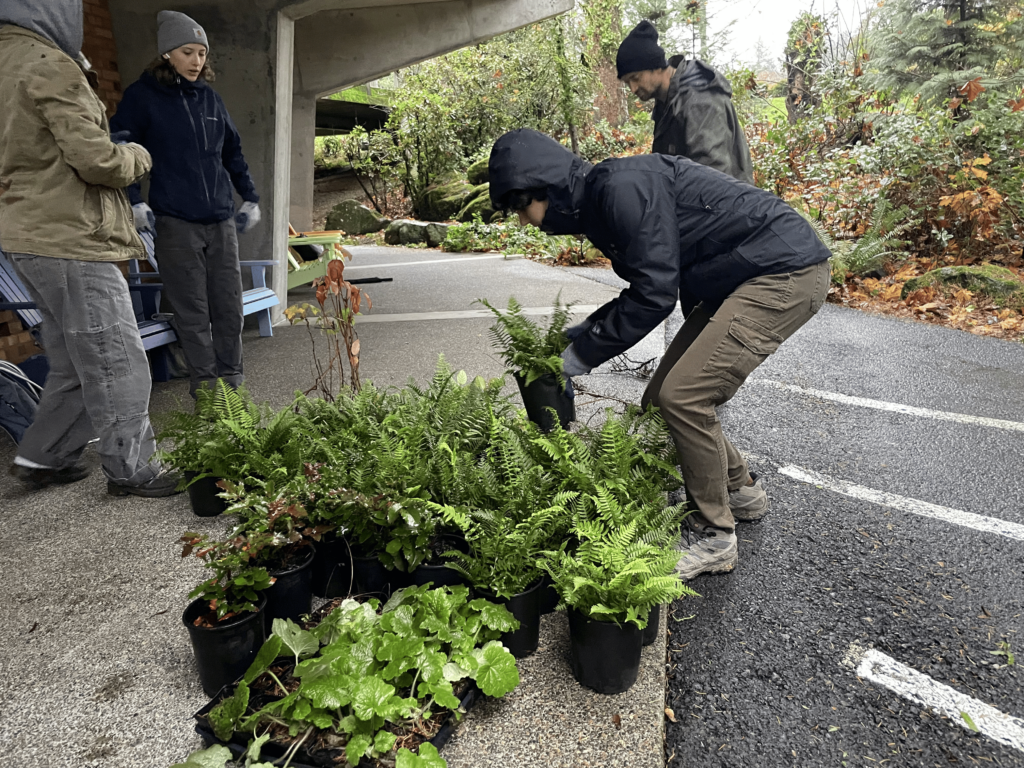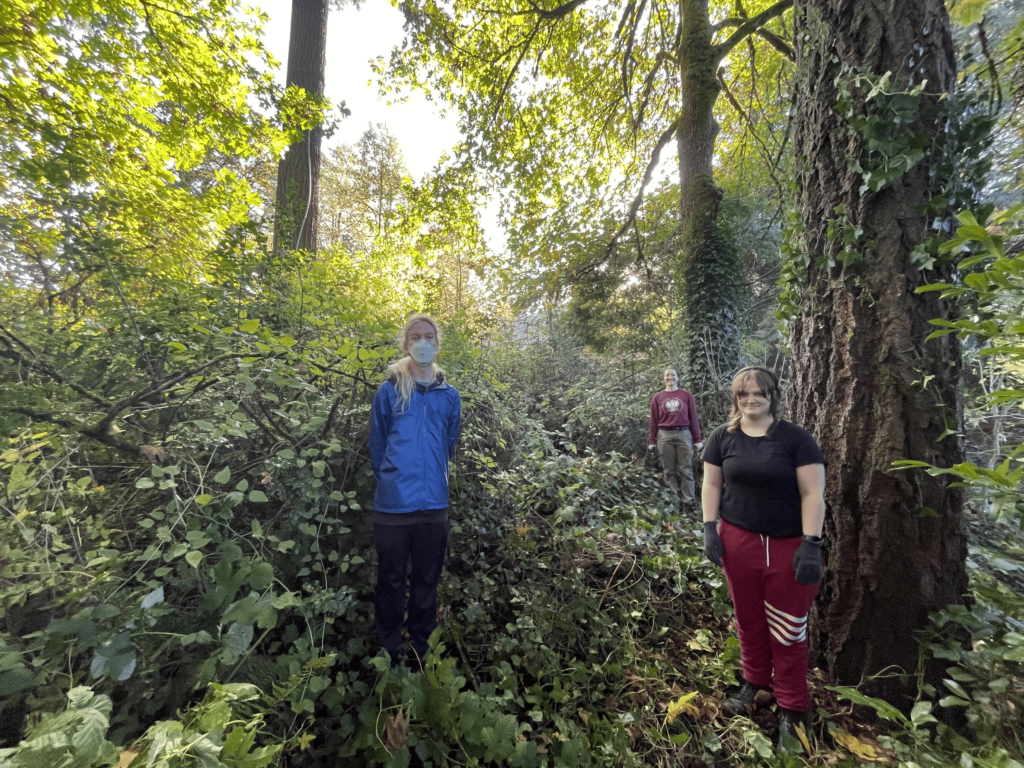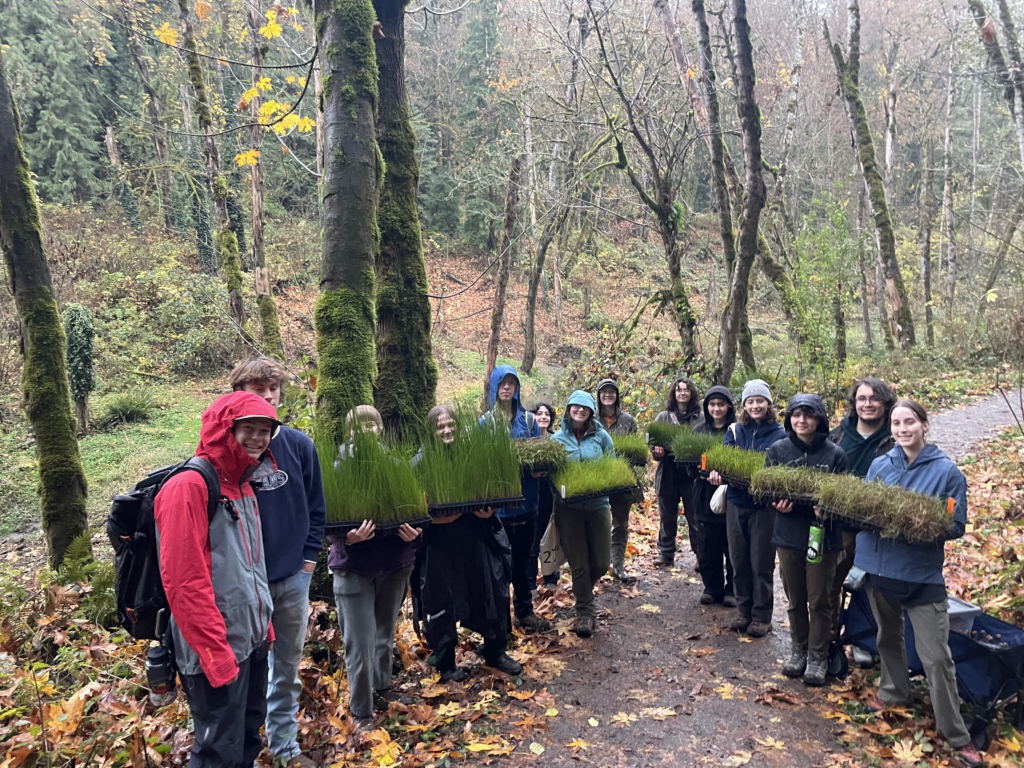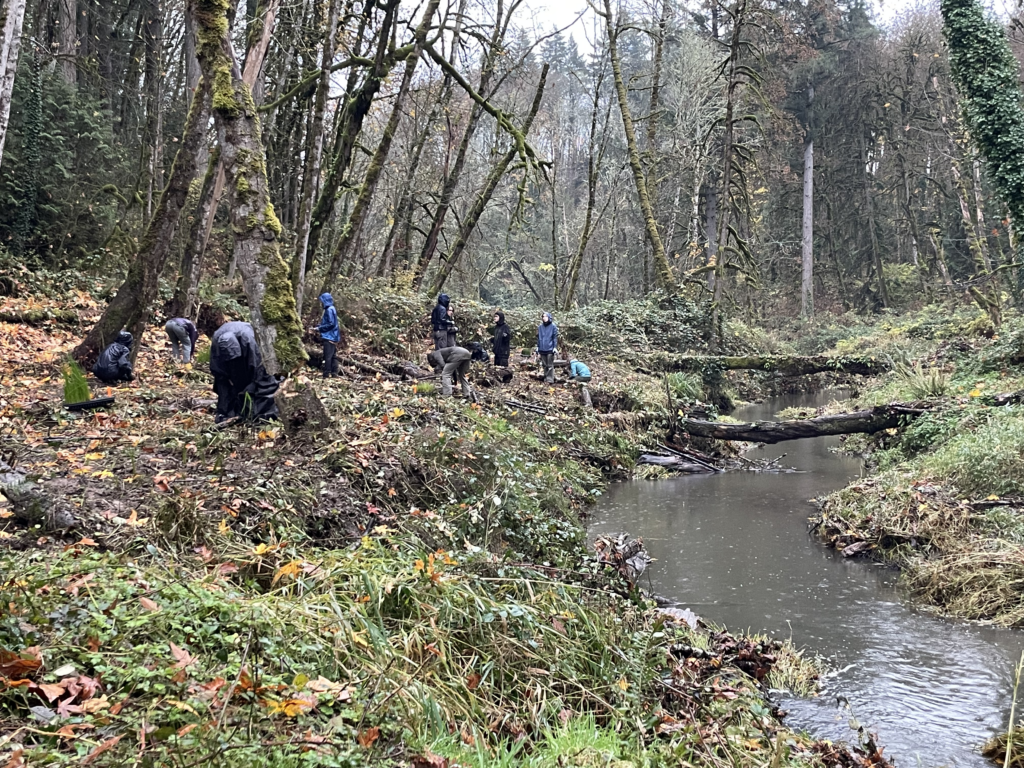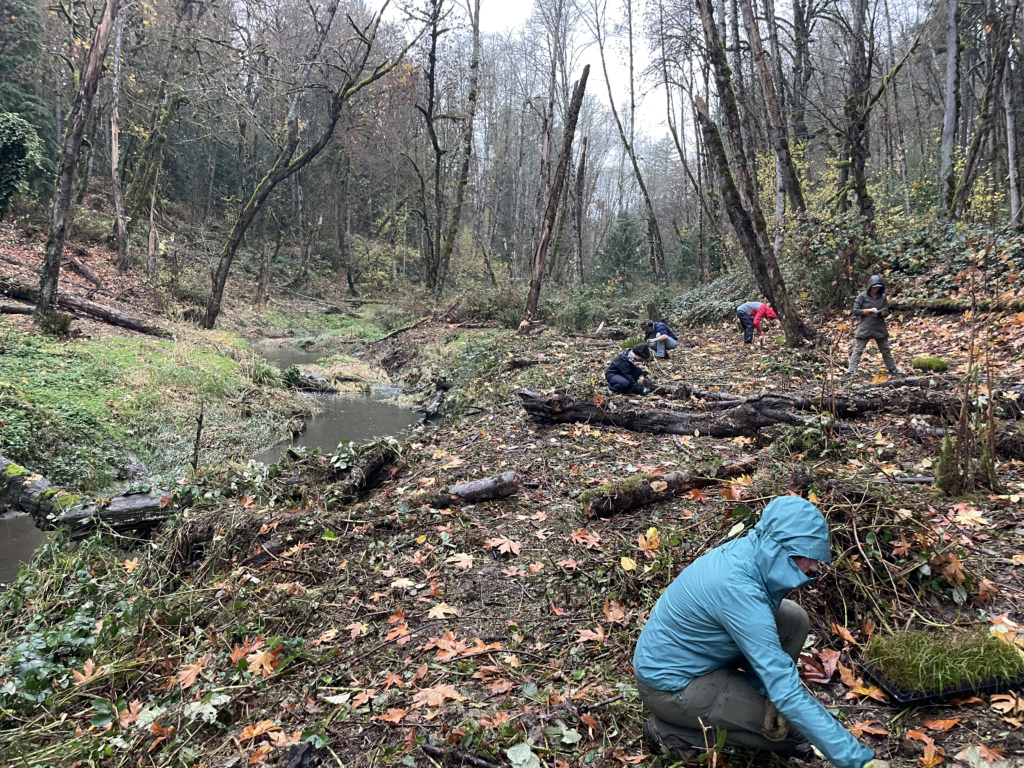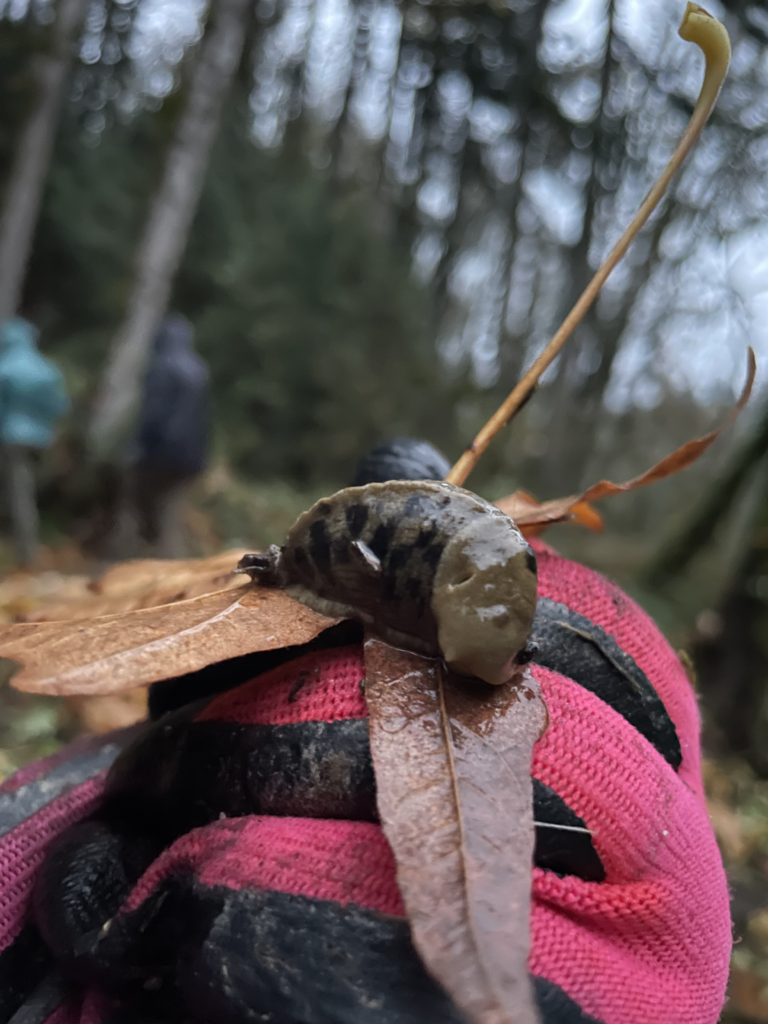Watershed Conservation Activities: PE/A 101 Course at Lewis & Clark College
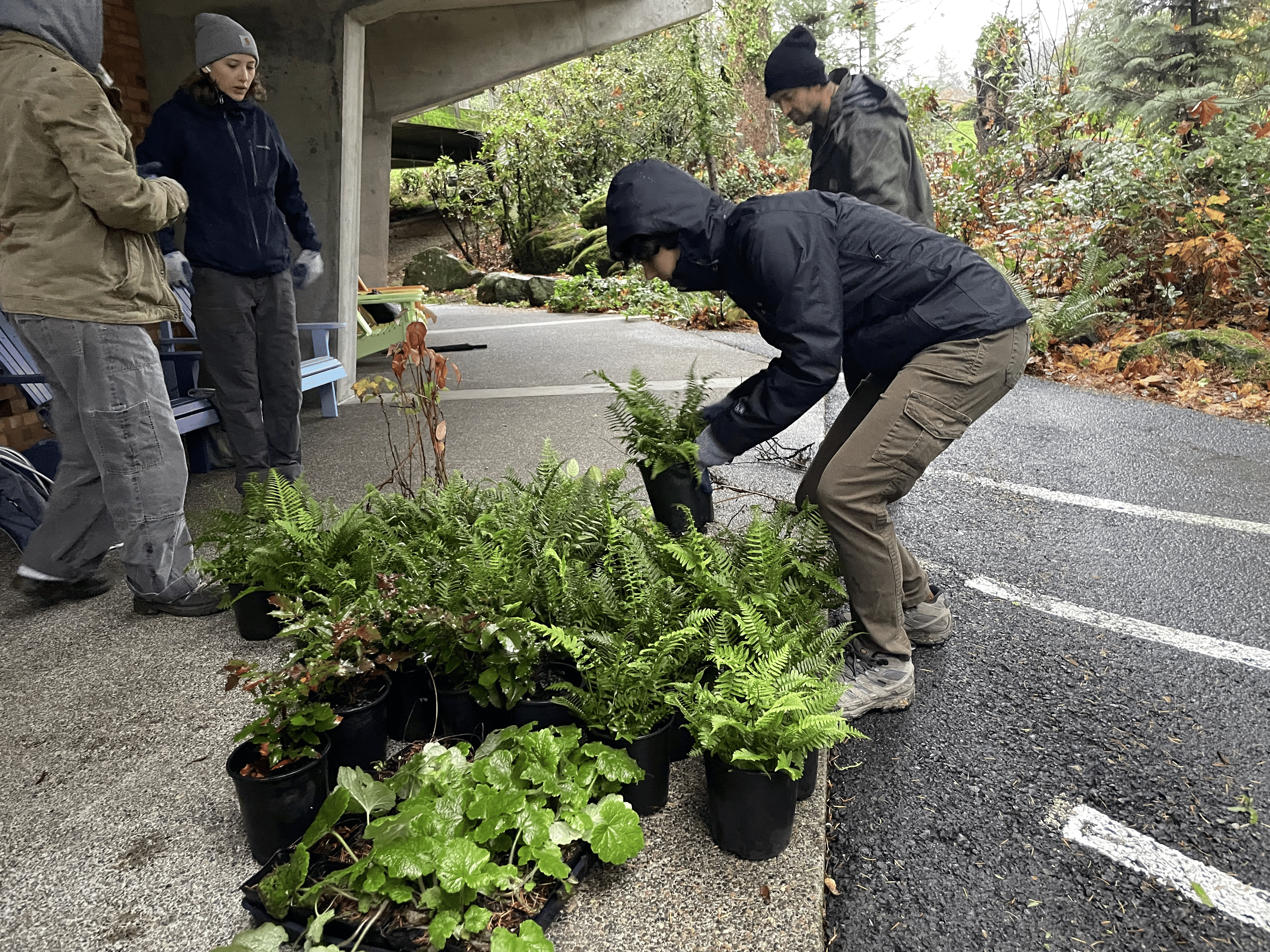
This week, Tryon Creek Watershed Council wrapped the first term of our Watershed Conservation Activities P.E. Course at Lewis & Clark College.
Our Lewis & Clark College Student Representative and Board alum, Jack Fiocco, worked his senior year to set something up to support Lewis & Clark’s on-campus habitat maintenance: He successfully created a new P.E. course, added to the LC curriculum called Watershed Conservation Activities. This course supports Lewis & Clark College in protecting the investments they’ve made to the natural areas on campus by managing invasive plants and planting native plants, as well as an interesting P.E. option for students from a variety of majors.
At the start of term, TCWC’s Alexis presented to the students about watersheds and native fish, and drew connections between this course’s work and watershed health. Our work area this term focused around the chapel building on campus, which was thickly vegetated with English ivy, Armenian/Himalayan blackberry, English holly, morning glory, and some other invasive plants, which were either interspersed throughout or outcompeting native sword ferns, shrubs, and mature trees.
At Lewis & Clark College, 158 plants were installed in our invasive plant removal focus areas; plus, many dozens of cuttings from thimbleberry and snowberry plants on campus. Dylan Carlson, Forest Conservationist & Groundskeeper, joined our class several times to share how his perspective, including as a member of the Hopi Tribe and in the Sun Clan, connects to his work on campus, and to introduce students to various native plants and helped facilitate planting.
One week we worked off-site at Tryon Creek State Natural Area, installing 1,352 native sedges, rushes, and grasses installed along main stem Tryon Creek; Friends of Tryon Creek provided these native plants and have been implementing invasive plant removal and ongoing land tending in this area.


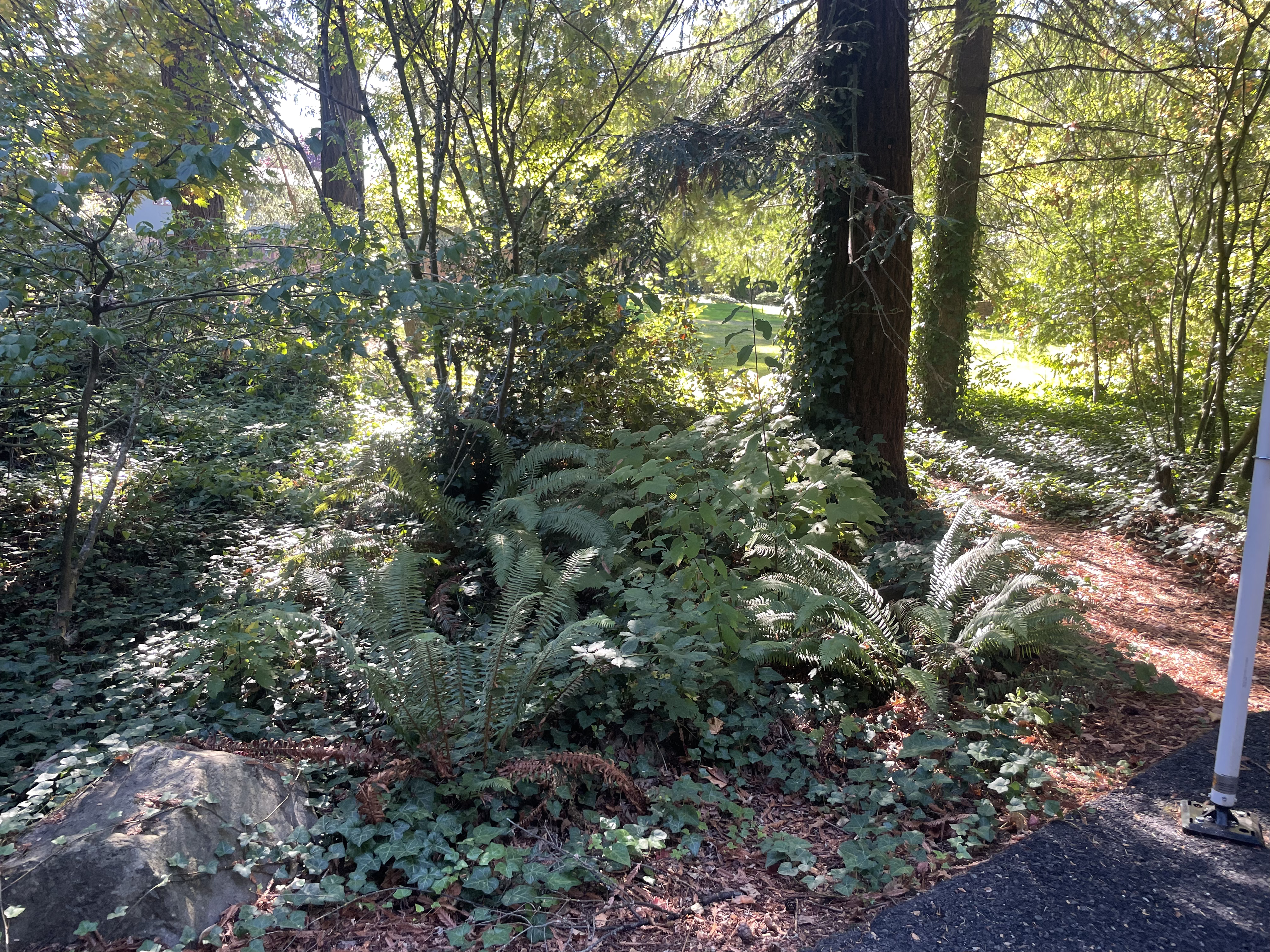
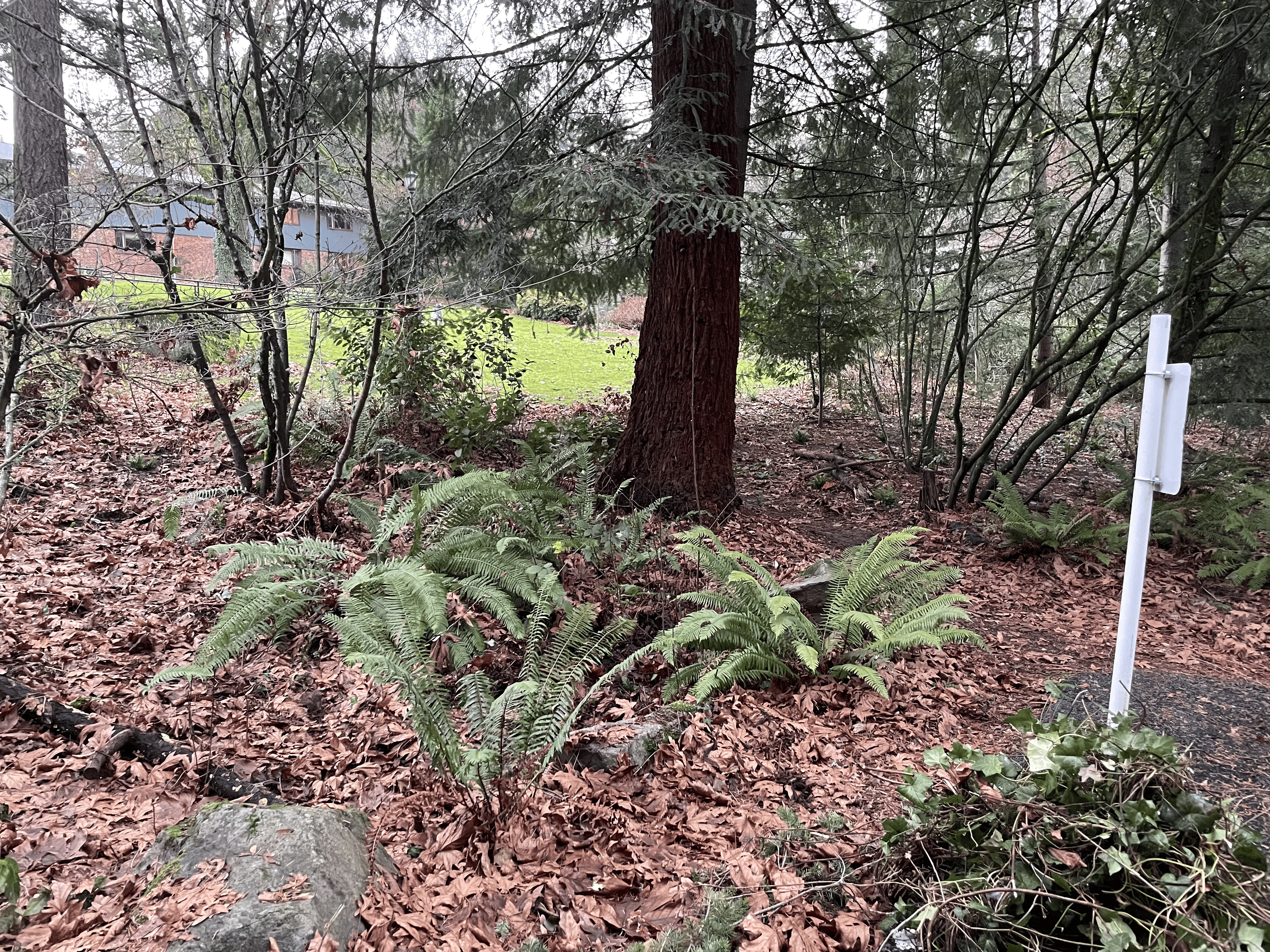






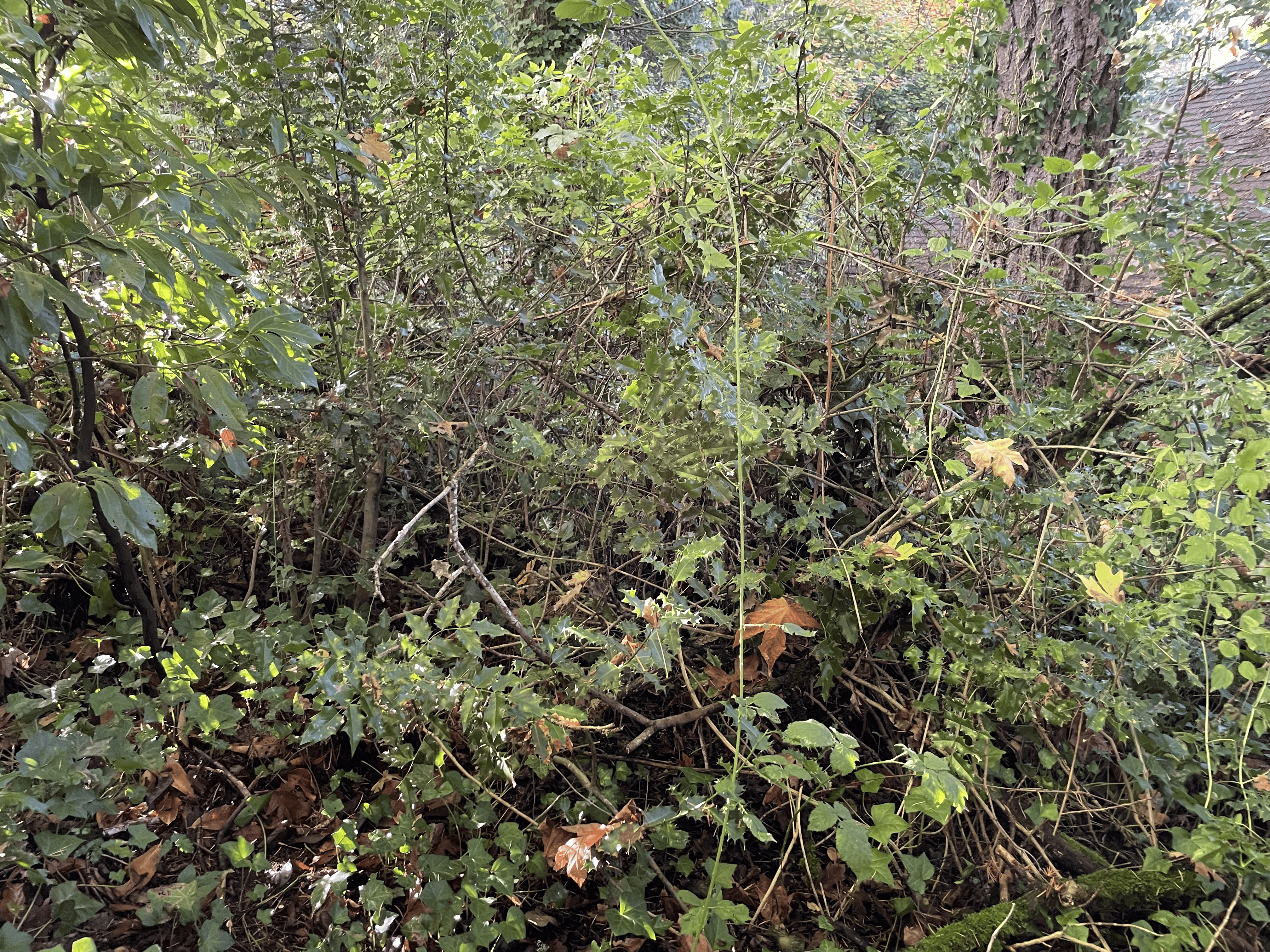
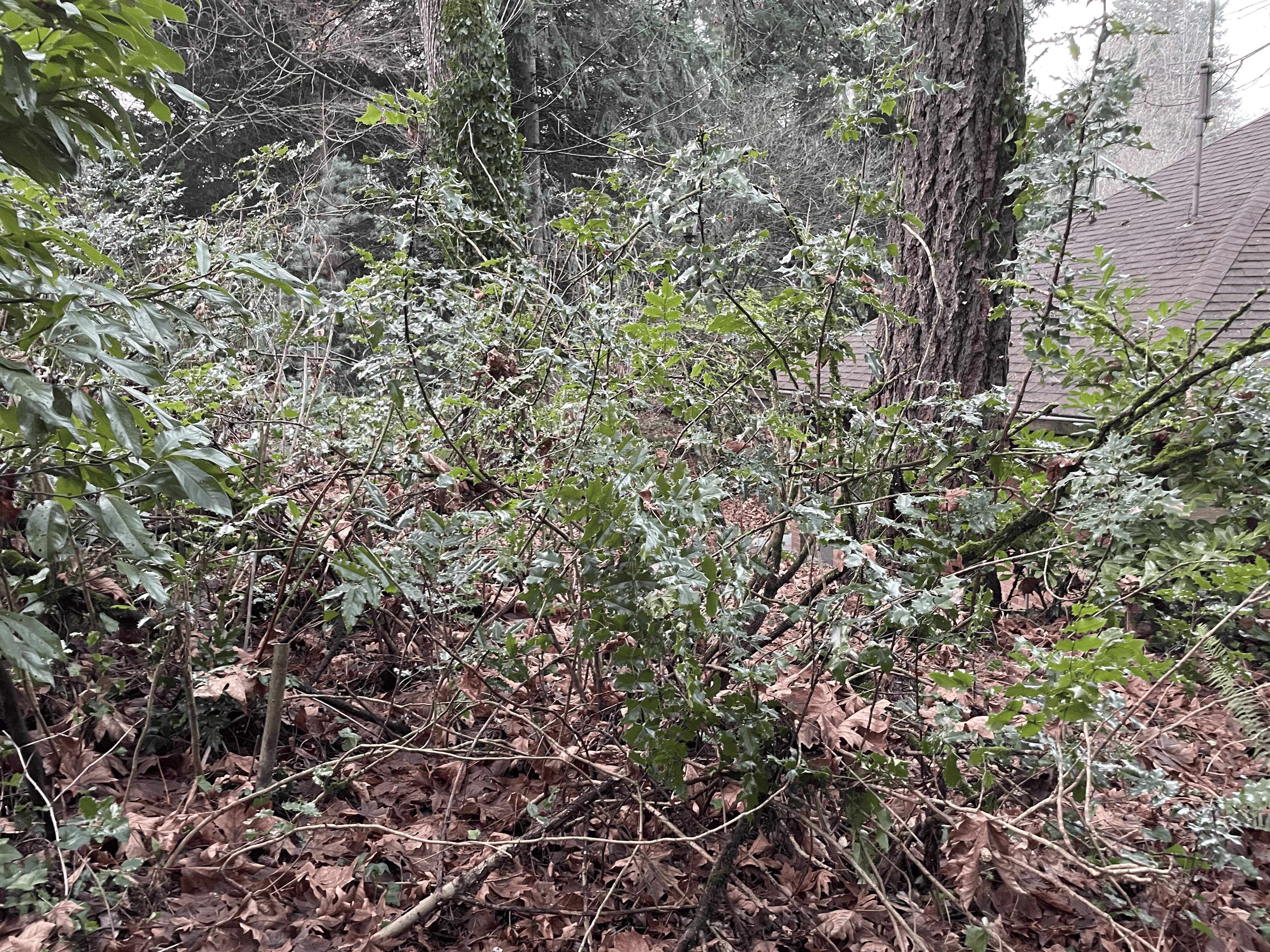
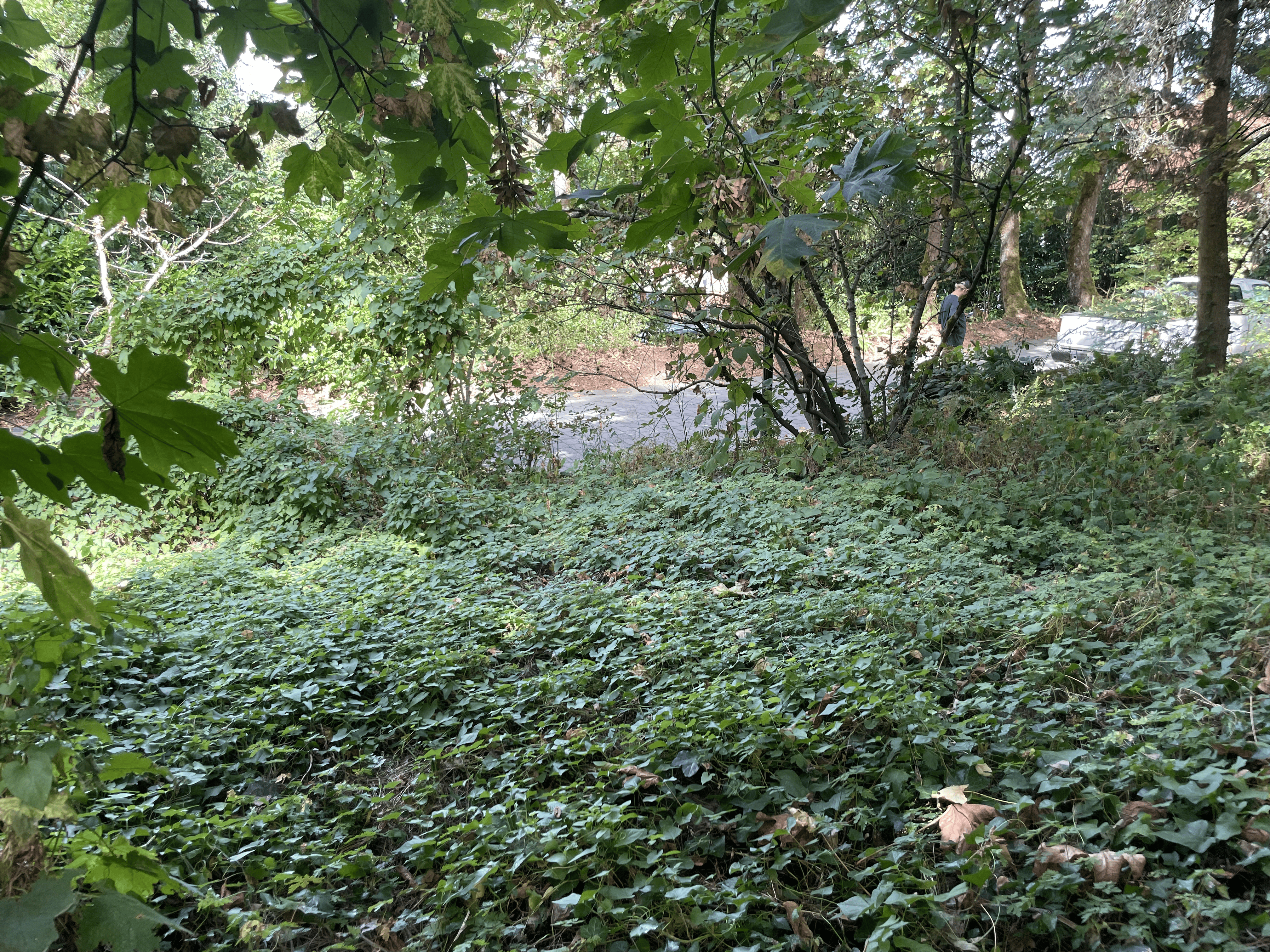
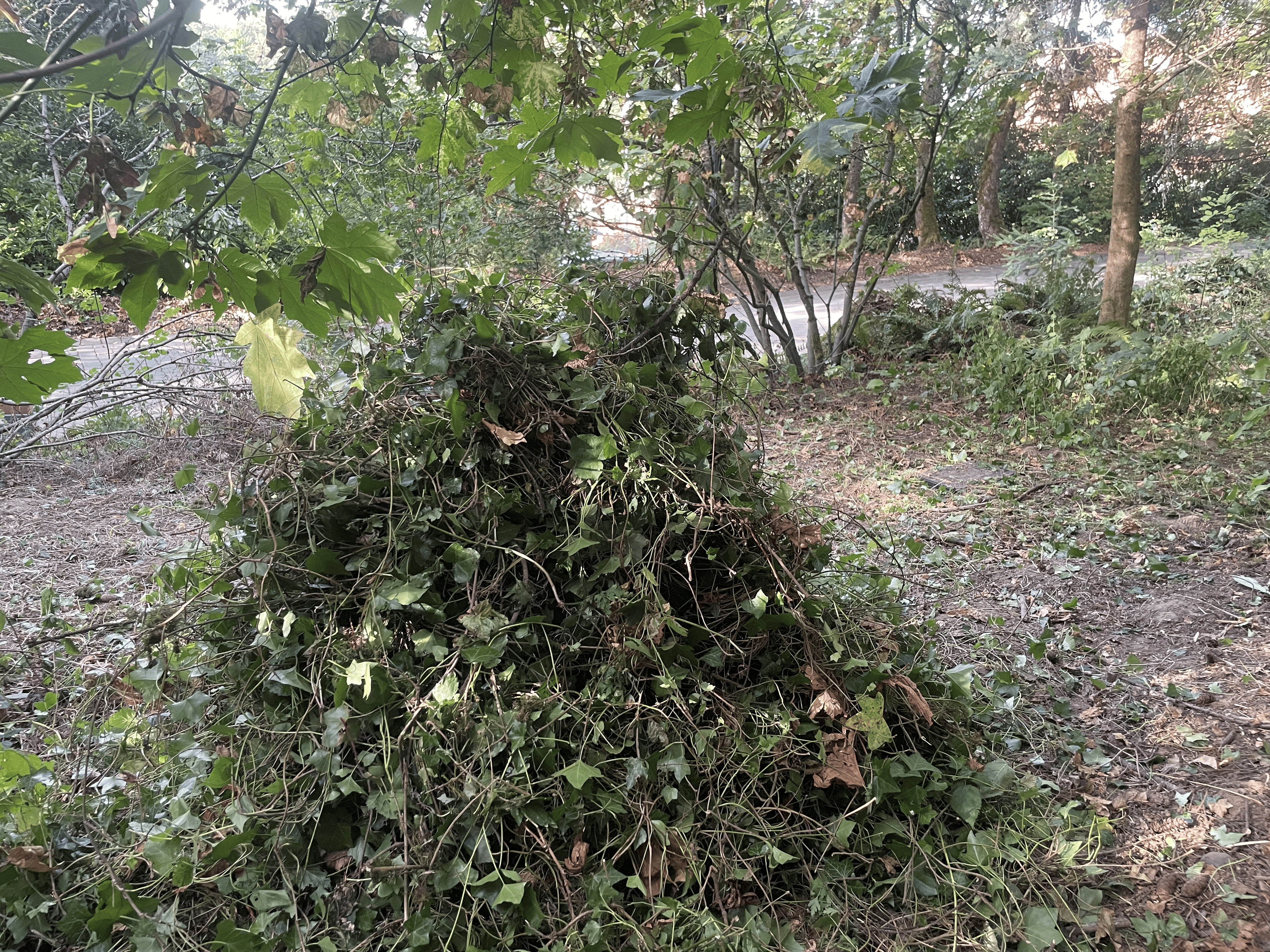




We’re looking forward to next term!


